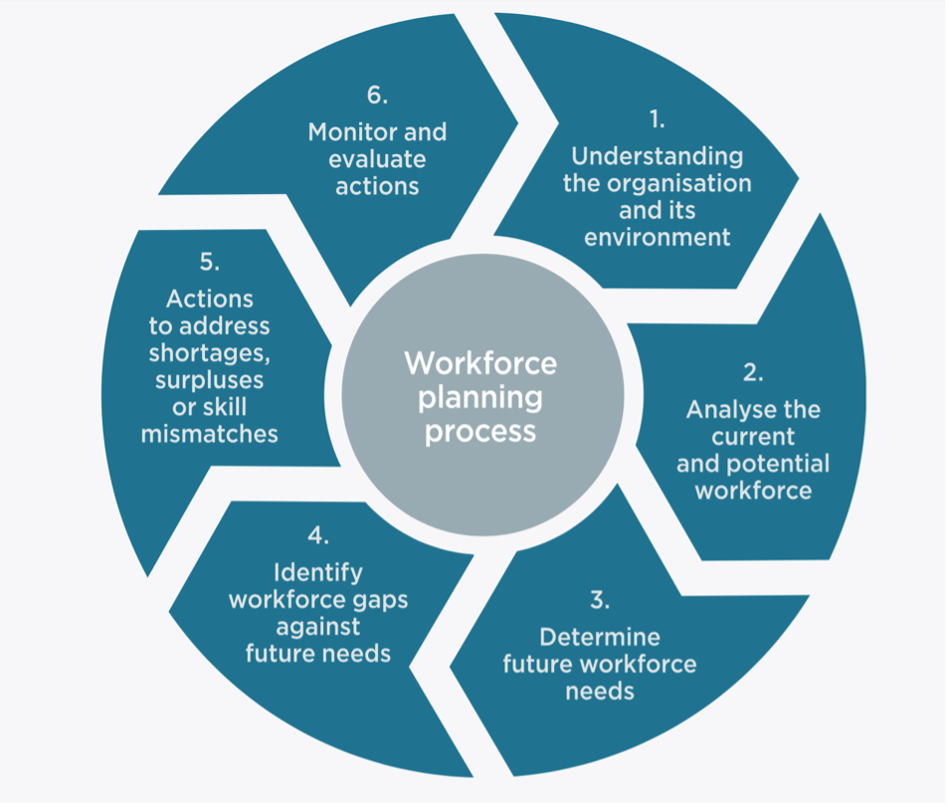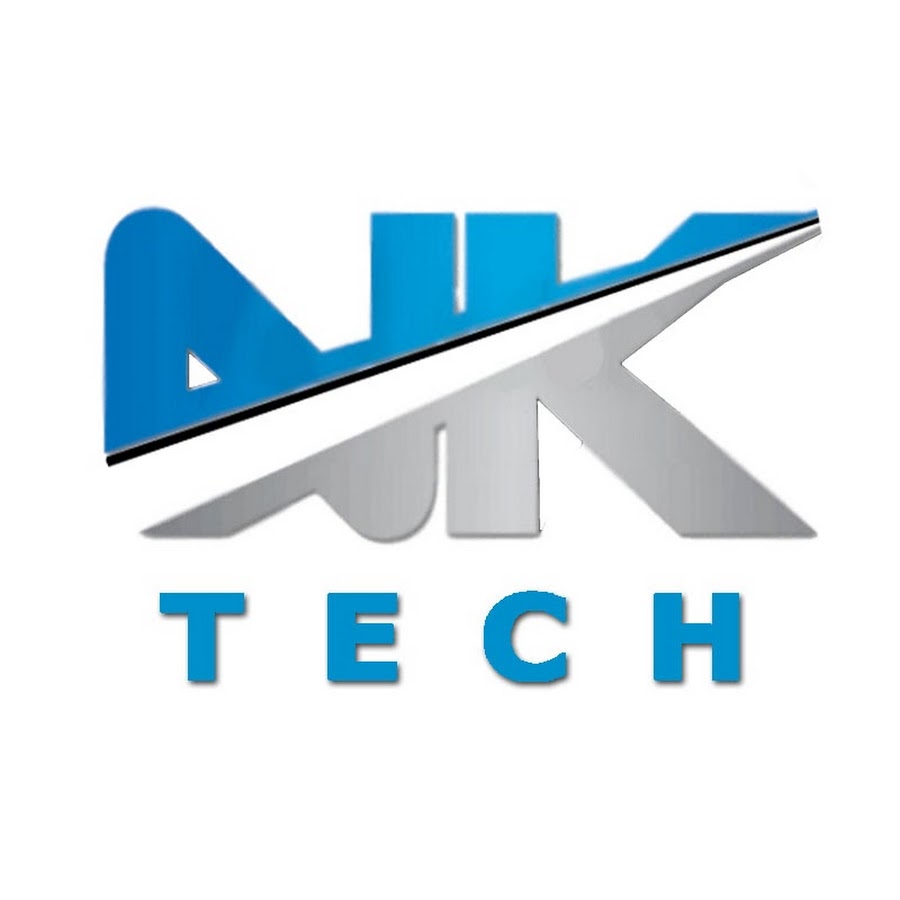Onboarding Technology: Streamlining the Employee Journey
Onboarding technology has revolutionized the way organizations welcome new employees. Gone are the days of tedious paperwork and manual processes; today, technology empowers businesses to create seamless, engaging, and effective […]
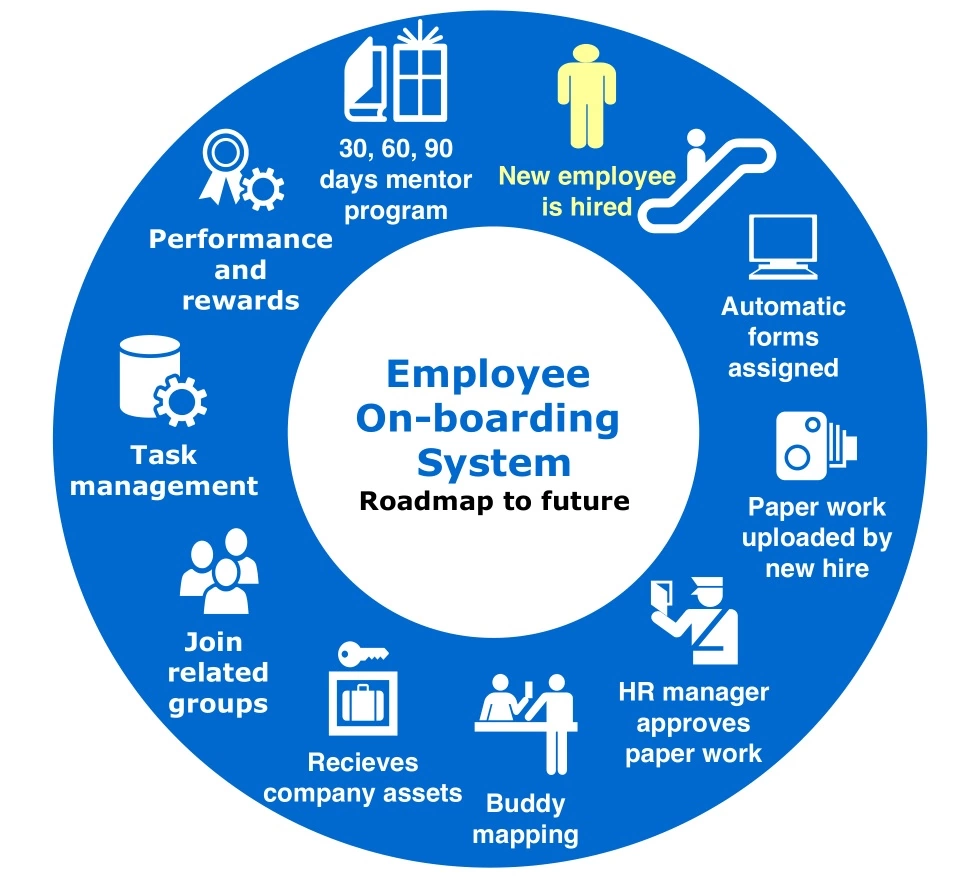
Onboarding technology has revolutionized the way organizations welcome new employees. Gone are the days of tedious paperwork and manual processes; today, technology empowers businesses to create seamless, engaging, and effective onboarding experiences.
This digital transformation extends beyond simple automation. Onboarding technology encompasses a range of tools and platforms designed to streamline communication, track progress, provide personalized learning resources, and foster a sense of belonging from day one.
What is Onboarding Technology?

Onboarding technology refers to the software and tools used to streamline and automate the employee onboarding process. It’s designed to make the transition from new hire to productive team member smoother and more engaging for both employees and HR teams.
Onboarding technology goes beyond traditional methods by providing a more personalized and interactive experience. Instead of relying solely on paperwork and in-person meetings, it leverages digital platforms and mobile apps to deliver information, complete tasks, and track progress.
Types of Onboarding Technologies
Onboarding technology encompasses a wide range of tools and platforms, each designed to address specific aspects of the onboarding process. Here are some common examples:
- Onboarding Software: This type of software provides a centralized platform for managing all aspects of the onboarding process, from pre-boarding to post-boarding. It typically includes features like task management, document signing, communication tools, and performance tracking. Examples include Workday, BambooHR, and iSolved.
- Learning Management Systems (LMS): LMS platforms are used to deliver online training courses, onboarding modules, and other learning materials. They often include features like quizzes, assessments, and progress tracking. Popular LMS examples include Moodle, Coursera, and LinkedIn Learning.
- Employee Communication Platforms: These platforms facilitate communication and collaboration among employees, including new hires. They often include features like chat, instant messaging, and video conferencing. Examples include Slack, Microsoft Teams, and Zoom.
- Mobile Apps: Mobile onboarding apps allow new hires to access onboarding materials, complete tasks, and stay connected with their team, all from their smartphones or tablets. They can also be used to gamify the onboarding process and make it more engaging. Examples include BambooHR’s mobile app and other onboarding software platforms that offer mobile capabilities.
Benefits of Onboarding Technology
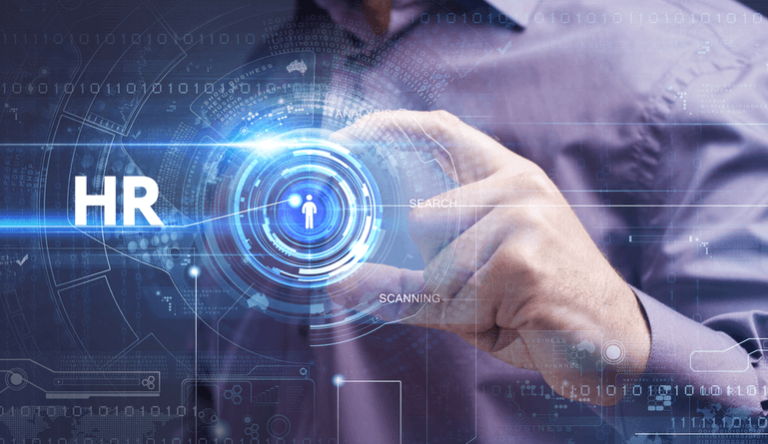
Onboarding technology is a powerful tool that can transform the employee experience and drive organizational success. It streamlines the onboarding process, enhances engagement, and ultimately contributes to a more productive and satisfied workforce.
Impact on Employee Engagement and Retention
Onboarding technology plays a crucial role in fostering employee engagement and retention. By providing a smooth and welcoming experience, it helps new hires feel valued and connected to the organization.
- Personalized Onboarding: Onboarding technology allows for personalized experiences tailored to individual roles and learning styles, making employees feel valued and understood.
- Improved Communication and Feedback: Interactive platforms facilitate open communication and feedback channels, enabling new hires to ask questions, express concerns, and receive timely guidance.
- Enhanced Knowledge Sharing: Onboarding technology provides access to relevant resources, training materials, and company information, empowering new hires to quickly learn and contribute.
- Community Building: Social features within onboarding platforms encourage interaction and collaboration among new hires, fostering a sense of belonging and community.
Impact on Employee Productivity and Performance, Onboarding technology
Onboarding technology significantly contributes to improved employee productivity and performance. By equipping new hires with the necessary tools and knowledge, it enables them to quickly adapt to their roles and contribute meaningfully.
- Faster Time to Productivity: Streamlined onboarding processes using technology accelerate the time it takes for new hires to become productive members of the team, contributing to organizational efficiency.
- Enhanced Knowledge Retention: Interactive learning modules and gamified elements enhance knowledge retention, enabling new hires to apply their learning effectively in their roles.
- Improved Performance: By providing a structured and supportive onboarding experience, technology helps new hires develop the skills and confidence needed to excel in their roles, leading to improved performance.
- Reduced Onboarding Costs: Automated processes and streamlined workflows reduce the administrative burden associated with onboarding, leading to cost savings for the organization.
Types of Onboarding Technology
Onboarding technology encompasses a wide range of tools and platforms designed to streamline the employee onboarding process. These technologies can be categorized based on their specific functions and target areas within the onboarding journey.
Employee Communication and Engagement Platforms
These platforms facilitate communication and engagement between new hires and their colleagues, managers, and the organization as a whole. They often provide features for:
- Interactive onboarding checklists and tasks: These platforms enable organizations to create personalized onboarding journeys, allowing new hires to track their progress and complete necessary tasks at their own pace. For example, platforms like BambooHR and Workday allow users to set up automated onboarding workflows and assign tasks to new hires based on their role and department.
- Social networking and collaboration tools: Features like internal messaging, forums, and group chats promote interaction and knowledge sharing among new hires and existing employees. Examples include Slack, Microsoft Teams, and Yammer.
- Onboarding surveys and feedback mechanisms: These tools allow organizations to gather feedback from new hires about their onboarding experience, identify areas for improvement, and ensure a positive first impression. Platforms like SurveyMonkey and Qualtrics offer templates and tools specifically designed for onboarding surveys.
Learning Management Systems (LMS)
LMS platforms provide a centralized hub for delivering training materials and assessments to new hires. They are particularly valuable for organizations with extensive training programs or those needing to deliver compliance-related training. Key features include:
- Online courses and modules: LMS platforms offer a range of content formats, including videos, presentations, interactive exercises, and quizzes. This allows organizations to create engaging and effective training programs tailored to specific roles and departments. Examples include Moodle, Coursera, and Skillshare.
- Performance tracking and reporting: LMS platforms enable organizations to monitor new hire progress, identify areas where they might need additional support, and measure the effectiveness of training programs. Platforms like LinkedIn Learning and Udemy offer features for tracking learner progress and generating reports.
- Gamification and microlearning: Some LMS platforms incorporate gamification elements and microlearning techniques to enhance engagement and retention. For example, platforms like Kahoot! and Quizlet use game-like elements to make learning more interactive and enjoyable.
Human Resources Information Systems (HRIS)
HRIS systems are comprehensive platforms that manage all aspects of the employee lifecycle, including onboarding. They streamline administrative tasks and provide a centralized repository for employee data. Key features for onboarding include:
- Employee data management: HRIS systems capture and manage essential employee information, such as contact details, employment history, and benefits selections. Platforms like ADP Workforce Now and Oracle HCM Cloud offer features for managing new hire data and ensuring compliance with legal requirements.
- Onboarding paperwork and document management: These systems enable organizations to automate the collection and processing of onboarding paperwork, such as employment agreements, tax forms, and benefits enrollment forms. Examples include BambooHR, Gusto, and Zenefits.
- Integration with other onboarding technologies: HRIS systems often integrate with other onboarding tools, such as communication platforms, LMS, and performance management systems, to create a seamless and efficient onboarding experience. For instance, platforms like Workday and SAP SuccessFactors offer integrations with other popular onboarding tools.
Pre-Onboarding and Candidate Experience Platforms
These platforms focus on enhancing the candidate experience and preparing new hires for their role before they even start. They often provide features for:
- Pre-boarding content and communication: These platforms allow organizations to send welcome messages, share company information, and provide resources to new hires before their start date. This helps build excitement and prepare new hires for their role. Platforms like HireVue and Greenhouse offer features for pre-boarding communication and content delivery.
- Personalized onboarding journeys: Pre-boarding platforms enable organizations to create personalized onboarding journeys based on the new hire’s role, department, and skills. This ensures that new hires receive relevant information and resources from the start. For example, platforms like Enboarder and Welcome.io allow organizations to tailor pre-boarding content to specific new hire profiles.
- Virtual onboarding and remote integration: For organizations with remote or hybrid workforces, pre-boarding platforms can facilitate virtual onboarding processes and help new hires connect with their teams remotely. Platforms like Lessonly and Trainual offer features for virtual onboarding and remote team integration.
Implementing Onboarding Technology
Implementing onboarding technology can be a transformative step for any organization. By automating and streamlining the onboarding process, businesses can improve employee engagement, reduce administrative burdens, and create a more positive first impression for new hires.
Steps Involved in Implementing Onboarding Technology
The process of implementing onboarding technology involves a series of strategic steps to ensure successful adoption and integration within your organization.
- Define Your Onboarding Needs: Begin by identifying your specific onboarding goals and challenges. What aspects of the onboarding process are most time-consuming or inefficient? What information do new hires need to access quickly and easily?
- Research and Select Technology Solutions: Explore the various onboarding technology solutions available in the market. Consider factors like features, pricing, integration capabilities, and user-friendliness.
- Pilot and Test the Technology: Before rolling out the onboarding technology to your entire workforce, conduct a pilot program with a small group of new hires. This allows you to identify any potential issues or areas for improvement.
- Train Your Team: Ensure your HR team and managers are properly trained on how to use the new onboarding technology. This includes understanding its features, functionality, and best practices.
- Gather Feedback and Iterate: Regularly collect feedback from new hires and stakeholders to identify areas for improvement. Use this feedback to refine your onboarding processes and optimize the technology.
Key Considerations for Choosing Onboarding Technology
Choosing the right onboarding technology is crucial for a successful implementation.
- Integration Capabilities: The technology should seamlessly integrate with your existing HR systems, such as payroll, benefits, and learning management systems.
- User-Friendliness: The platform should be intuitive and easy for both new hires and HR staff to use.
- Customization Options: The technology should allow you to customize the onboarding experience to meet your specific needs and company culture.
- Mobile Accessibility: In today’s mobile-first world, the onboarding technology should be accessible on various devices, including smartphones and tablets.
- Security and Compliance: The technology should meet all relevant security and compliance standards to protect sensitive employee data.
Step-by-Step Guide for Integrating Onboarding Technology
Integrating onboarding technology into your existing workflows requires a systematic approach.
- Assess Current Onboarding Process: Begin by documenting your current onboarding process. Identify key tasks, timelines, and any pain points or inefficiencies.
- Map Out New Onboarding Workflow: Develop a new onboarding workflow that incorporates the onboarding technology. Consider how the technology will streamline tasks and enhance the overall experience.
- Configure the Technology: Customize the onboarding technology to align with your new workflow and company branding. This may include setting up user accounts, creating onboarding content, and configuring communication channels.
- Train and Support Users: Provide comprehensive training to both HR staff and new hires on how to use the onboarding technology effectively. Offer ongoing support and resources.
- Monitor and Analyze: Track key metrics such as completion rates, engagement levels, and feedback to evaluate the effectiveness of the onboarding technology. Use these insights to make necessary adjustments.
Best Practices for Onboarding Technology
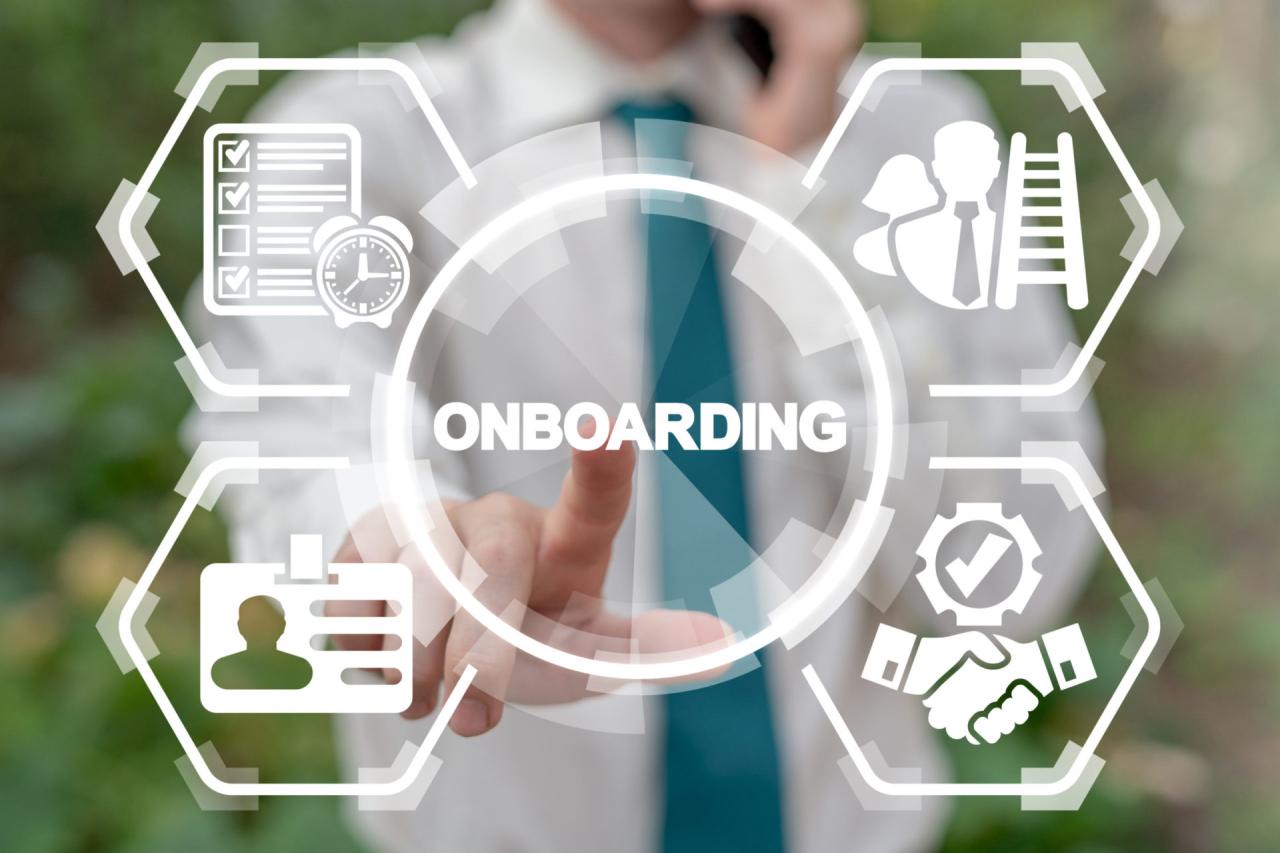
Optimizing onboarding technology is crucial for creating a smooth and successful employee experience. By implementing best practices, organizations can maximize the benefits of these tools and ensure new hires are effectively integrated into the company culture.
Personalize the Onboarding Experience
Personalization is key to creating an engaging and effective onboarding experience. By tailoring the content and activities to individual needs and preferences, organizations can enhance employee engagement and satisfaction.
- Use data to create personalized onboarding paths: Analyze data points like job role, department, location, and previous experience to create customized onboarding journeys. This allows for targeted content delivery and relevant learning resources.
- Offer flexible learning options: Provide a mix of learning formats, including videos, interactive modules, and live sessions, to cater to different learning styles and preferences. This flexibility ensures that all employees can engage with the onboarding program in a way that suits them best.
- Encourage peer-to-peer interaction: Foster a sense of community by facilitating interactions between new hires and their colleagues. This can be achieved through buddy programs, team-building activities, and social events.
Leverage Technology to Simplify Administrative Tasks
Onboarding technology can streamline administrative processes, freeing up HR professionals to focus on more strategic tasks.
- Automate paperwork and onboarding forms: Use digital forms and e-signatures to eliminate the need for paper-based processes. This simplifies the onboarding process for both employees and HR.
- Integrate with HR systems: Ensure that onboarding technology seamlessly integrates with existing HR systems, such as payroll and benefits platforms. This allows for data synchronization and eliminates manual data entry.
- Track onboarding progress and provide insights: Utilize analytics and reporting features to monitor onboarding progress and identify areas for improvement. This data can be used to refine the onboarding process and optimize outcomes.
Measure and Analyze Onboarding Outcomes
Data and analytics play a crucial role in understanding the effectiveness of onboarding technology. By tracking key metrics, organizations can identify areas for improvement and optimize their onboarding processes.
- Track time to productivity: Measure the time it takes for new hires to become fully productive in their roles. This metric provides insights into the effectiveness of the onboarding program in equipping employees with the necessary skills and knowledge.
- Assess employee engagement and satisfaction: Gather feedback from new hires through surveys and interviews to understand their overall onboarding experience. This feedback can be used to identify areas for improvement and enhance employee satisfaction.
- Analyze retention rates: Monitor the retention rate of new hires to determine the impact of the onboarding program on employee retention. This data can be used to identify potential issues and improve the onboarding process to reduce turnover.
Future Trends in Onboarding Technology
The landscape of onboarding technology is constantly evolving, driven by advancements in artificial intelligence (AI), automation, and user experience (UX). These trends are shaping the future of employee onboarding, making it more efficient, engaging, and personalized.
The Rise of AI and Automation
AI and automation are playing an increasingly important role in streamlining onboarding processes.
- Chatbots and Virtual Assistants: These intelligent agents can answer employee queries, guide them through onboarding tasks, and provide personalized support, reducing the burden on HR teams. For example, a chatbot can assist new hires in setting up their accounts, accessing company policies, and scheduling meetings.
- Automated Workflow Management: AI-powered platforms can automate repetitive tasks such as sending welcome emails, assigning onboarding modules, and tracking progress. This frees up HR professionals to focus on more strategic initiatives.
- Personalized Onboarding Content: AI algorithms can analyze employee data to deliver tailored onboarding content, such as training materials, resources, and communication, based on their role, skills, and interests.
Focus on Employee Experience
The focus on employee experience is driving innovation in onboarding technology.
- Gamification: Onboarding platforms are incorporating game mechanics such as points, badges, and leaderboards to make the process more engaging and interactive. This can boost employee motivation and knowledge retention.
- Mobile-First Onboarding: With the rise of remote work and mobile devices, onboarding platforms are becoming increasingly mobile-friendly, allowing employees to access information and complete tasks from anywhere.
- Virtual Reality (VR) and Augmented Reality (AR): VR and AR technologies are being explored to create immersive onboarding experiences. For example, VR simulations can provide new hires with realistic scenarios, such as customer interactions or safety procedures.
Data-Driven Insights
Data analytics is becoming crucial for optimizing onboarding processes.
- Performance Tracking: Onboarding platforms are collecting data on employee engagement, completion rates, and feedback to identify areas for improvement.
- Predictive Analytics: AI can be used to predict employee retention rates based on onboarding data, allowing organizations to proactively address potential issues.
Last Point
By embracing onboarding technology, organizations can empower their employees, enhance productivity, and foster a positive work environment. As technology continues to evolve, the future of onboarding promises even more innovative solutions that will further streamline the employee journey and create a truly exceptional experience for all.
Onboarding technology aims to streamline the employee integration process, ensuring a smooth transition into their new roles. One innovative approach, inspired by the principles of zipper technology , involves breaking down complex onboarding tasks into smaller, manageable modules. This modular approach allows employees to progress at their own pace, mastering each segment before moving on to the next, creating a more engaging and effective onboarding experience.
